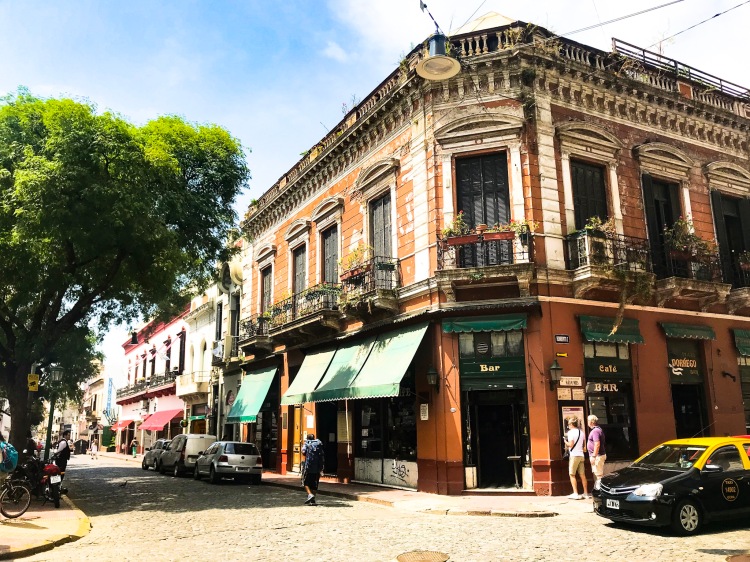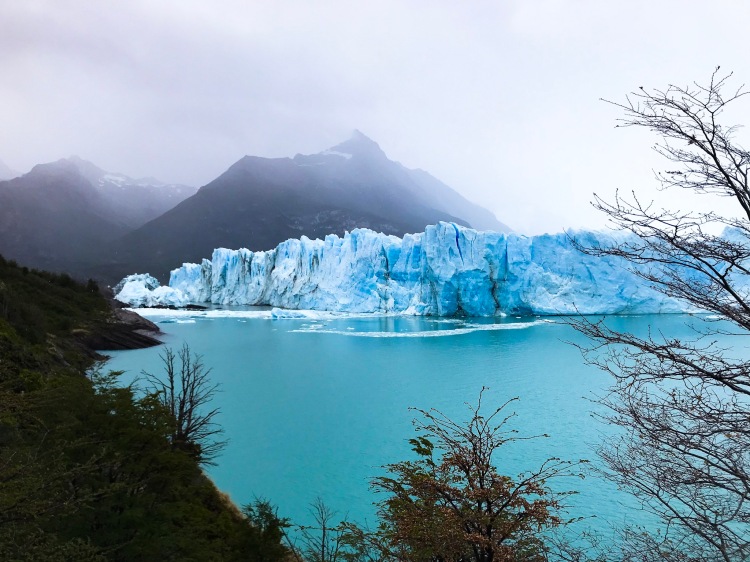As we make our way across the border into Chile, it’s hard to believe that 8 weeks in Argentina has passed us by so quickly. From a colourful Buenos Aires to Bariloche; the gateway to Patagonia, further south to the stunning snow-capped Andean landscapes of El Chaltén and El Calafate, north to Mendoza’s wine region, Salta, and to the vibrant cultural communities within the path of the Quebrada de Humahuaca; its been full to say the least! Of incredible sights and experiences, stunning landscapes, delicious eats and beautiful new friends.
There’s no denying that this country is huge. In all of its corners, it’s so contrasting to the next and there’s just so much to see. And oftentimes with travelling, the hardest part is just knowing where to even begin.
So, we’ve shortlisted a ‘Top 10 List of Argentinian Highlights’ (in no particular order), with some added tips and tricks, that you should highly consider for your next adventure to this truly vast and beautiful land.
1. Buenos Aires.
With its old European grandeur and Latin passion, Buenos Aires is the bustling cosmopolitan capital of Argentina. Its sexy and full of energy, yet contrastingly, can be beautifully calm. From a character-fuelled and charming San Telmo; the cities oldest barrio, to the colourful and perhaps misunderstood La Boca, to a trendy and eclectic Palermo, modern developments of Puerto Madero and to cultural sights of Recoleta, – this is just scratching the surface! You could spend days aimlessly wandering, taking in the the stately architecture and beautifully curated parks, sampling all the delicious eats, the bars, the galleries. You won’t want to leave.
Tip. Take a walking tour with ‘Free Walking Tours’. These are a great way to learn about new locales from the locals, get a feel for the city and meet fellow travellers. Plus, being free, it leaves plenty of Peso’s for other activities!

The Colours of San Telmo
2. Volunteering off-the-grid (WorkAway)
Workaway.com is an incredible initiative that allows volunteers to affordably stay a little longer, as well to fully experience local culture. It’s at online platform whereby hosts advertise projects (inclusive of accommodation and meals) at the expense of 5 hours of work per day, for 5 days’ per week, or similar.
We did a WorkAway in Confluenica Traful (100km north of Bariloche in the middle of nowhere). For 2 weeks we lived off-the-grid and contributed to the building/installation of an eco-filtering system for human waste. The work was honest, the surrounds were beautifully picturesque on the banks of the river and in the valley of the mountains, conversations were full and free of distractions, meals were prepared on and shared around the fire and our host and his family were incredibly generous. The experience was a welcomed change to a slower pace and a refreshing reminder to appreciate simple living. As well, it was rewarding to work with nature and contribute to the building of someone else’s dream.
You can read more about the experience here.
Tip. Workaway is a global initiative. Try to make contact with the hosts a little in advance so that you can plan your travels around the project. Sometimes the response rate is slow moving so a bit of planning ahead can be worthwhile. Argentina offers an array of interesting and cultural opportunities that include assisting with wine and beer production, contributing to various eco/organic-farming projects, teaching English, helping out in hostels and so on.
3. Bariloche.
This beautiful township is the gateway to Patagonia and lies on the banks of Nahuel Huapi Lake. It’s an outdoor lovers’ paradise that offers an abundance of hiking trails (day and overnight), mountain biking, water sports and in the wintertime, is well positioned for the snow. To keep you fuelled and hydrated, it’s also renowned for its helados (icecream), alfajores (delicious biscuits filled with dulce de leche – a burnt caramel-like filling), artisan chocolates and beer.
We hiked the Cerro Campanaria, Villa Tacul trail in Llao Llao National Park and Refugio Frey. Refugio Frey was a 5-hour return trip with incredible views of the snow-capped granite peaks that encased the turquoise lake at the summit. It’s a must do!
Tip. Sample the helados at Mamushka (Dulce de leche and Americano flavours can be vouched for!) and try the many (free samples) chocolates along the main street. Drink beer at Manush and Cerveceria Wesley, and eat your weight in alfajores from the many select panaderias (patisseries) throughout the town.
Top Tip. Try the raspberry (frambuesa) beer. It’s delicious and won’t last!

Cerro Campanaria Views

Refugio Frey Summit 
Along the way – Refugio Frey
4. El Chaltén
This place is an absolute must see. If time permits, stay a few days to enjoy the many hikes that are literally on its doorstep within the Los Glaciares National Park; particularly the iconic Laguna de los Tres (Mount Fitz Roy). We stayed 5 nights and hiked the Laguna de los Tres twice due to the first day being overcast, and it was every bit (and more!) worth it the second time around. We also hiked the Loma del Pliegue Tumbado, Chorrillo del Salto and to the Los Cóndores viewpoint, racking up over 70 kilometers of hiking in 4 days. Phew!
Tip. Despite the many avid trekkers getting about in expensive getup, you do not need the latest technology or hiking gear to conquer El Chaltén’s surrounding trails. The paths are well marked and more than suitable for varying fitness levels, as well comfortable walking shoes.

5. El Calafate
El Calafate is a touristy town that is somewhat reminiscent of a ski resort. It’s beautifully constructed with tree logs and houses many bar/restaurants and an oversupply of souvenir stores. The drawcard is the impressive Perito Moreno Glacier and Argentino Lake, which is the biggest lake in Argentina and home to large flocks of pink flamingos.
The Glacier is a half-day trip from El Calafate and is accessible by local bus (or organised tour for a premium) and the lake is a short walk from town. You can read more about the Perito Moreno Glacier here.
Tip. Though it’s a long time to spend at the glacier, take the earlier local bus departure as the restaurant closes at 5pm and you will be left with nothing to do and nowhere to go (no bathrooms even). If it’s cold and raining like it were for us, it’s not the most enjoyable of ways to finish such an incredible experience.

6. Mendoza.
If you do nothing else in Mendoza other than drink Malbec and eat steak and empanadas than you’ve done well.
We arrived to Mendoza on a Sunday and the city had completely shut down. It’s a completely different atmosphere during the week so make sure you sneak in a few extra days to enjoy all that it offers.
The highlight of our stay was a self-guided wine bike tour (bikes rented from Baccus Bikes) to the Chacras de Coria region, visiting Viamonte, Nieto Senetiner and Largarde wineries and receiving comprehensive tours at two of those. It was really interesting to learn how the wines were produced, better yet, to sample them!
Tip. Grab a bottle at a couple of the wineries and enjoy the beautiful surrounds from the terrace. It’s often cheaper to purchase by the bottle than per glass.
In Mendoza, eat at Beirut Café at Av. Alem 97. It’s colourful and friendly, incredibly affordable (eggs and coffee for $3.00 AUD) and the food is great!
7. Salinas Grandes.
We were torn as to whether to cross the border into Bolivia to see the infamous Salar de Uyuni or to keep things local (and within budget) and visit Salinas Grandes. We chose the latter and were not at all disappointed by the experience. At an average of 3450m above sea level and covering off an impressive 212 km², Salinas Grandes is Argentina’s largest natural salt lake.
We took a tour with ADN Travel from San Salvador Jujuy (Jujuy) and visited both Salinas Grandes and Purmamarca for the equivalent of $50 AUD per person. Considering it was an all day tour, as well we received a bit of commentary along the way (as best we could understand in Spanish), and got dropped off in Tilcara (our next stop) it was really good value for money.
The steep winding road along Route 52 to Salinas Grandes was an impressive experience in itself, reaching heights in excess of 4100m ASL.
Tip. We stayed in SS Jujuy and took the tour from there. If you’re pushed for time however, there are several day tours that operate from Salta, which is 1.5 hours south. Don’t forget to pack sun protection. It’s incredibly glary!

8. Purmamarca.
This quaint cultural village lies within the Quebrada de Humahuaca in the north-western province of Jujuy and is set at the foothill of the ‘Hill of Seven Colours’. We visited this town as part of a day tour with ADN Travel (from SS Jujuy), together with Salinas Grandes.
There is a generous sized art/craft market in the main square and incredible scenery to explore by foot. From the village, we walked the Paseo de los Colorados trail that leads into the surrounding desert. The colours and textures within the landscape were completely spellbinding.

9. Tilcara.
The more touristy of the towns within the mountainous valley of the Quebrada de Humahuaca, Tilcara is a bustling community of markets, eateries and stunning landscapes. It’s one of the oldest and continuously inhabited places in Argentina with civilisation dating back more than 10,000 years. Nowadays, it continues with a rich indigenous culture.
Wander the dusty roads and peek inside the many stores selling llama wool souvenirs, pick up alfajores and tortillas from street vendors and enjoy the warmth of the community.
10. Humahuaca.
Perhaps best known for its close vicinity to the stunning Serrania el Hornocal and Uquia, Humahuaca has an incredible energy, and I’m going to make a big call here… THE BEST empanadas in all of the country. The pastry was flaky, the filling was simple – queso (cheese) they were perfectly fried and were served with the most unassuming mild chilli sauce.
We spent one night here and took a half day tour to el Hornocal, wandered the cobblestone streets and artisan craft markets, ate at Aisito Restaurant and enjoyed the many vibrant colours and surrounds of this friendly community.
You can read more about our experience to Serrania el Hornocal here.
Tip. Arrange a tour to El Hornocal for the late afternoon when the colours are most vivid as the sun goes down. Similarly, in town climb the stairs to the ‘Monumento a los Heroes de la Indepencia’ for impressive views over the village as the sun sets. The glow of the mountains on the horizon is beautiful.
This really is just a snapshot to the many incredible places to visit and experience whilst in Argentina. Unfortunately, time and money didn’t permit but there are a stack more sights that we would have liked to have explored! Including Iguazu Falls, Puerto Natales and Torres Del Paine, and of course the end of the world – Ushuaia.
I hope you found this helpful and were able to gain some travel-inspo for your next adventure to this vast and colourful land. If you’ve also been to Argentina, I’d love to hear your experiences and favourite memories too. There’s definitely going to be a ‘next time’!











